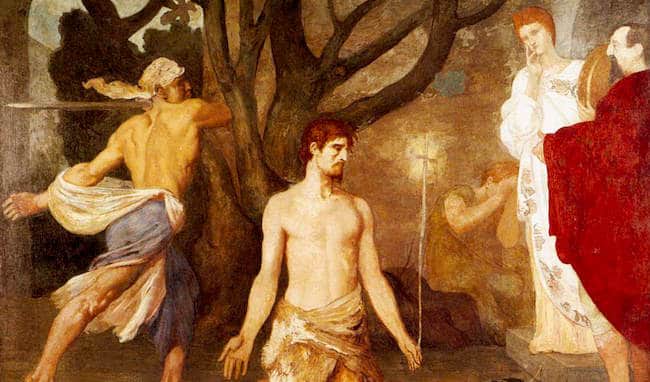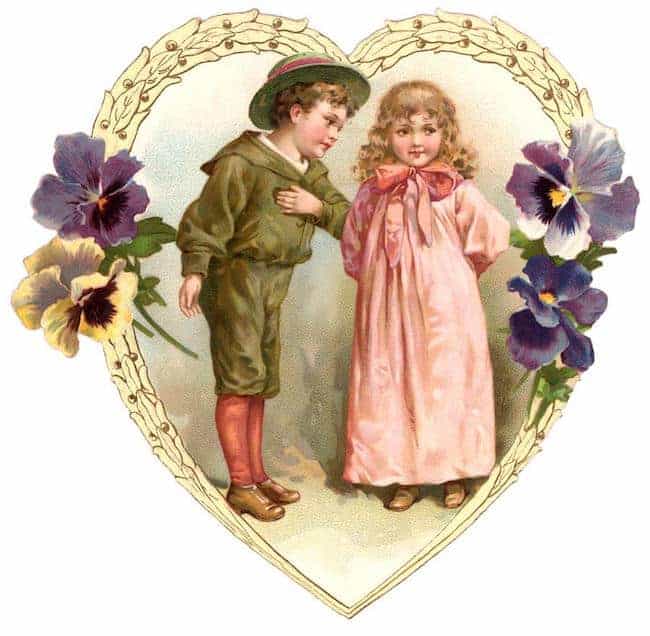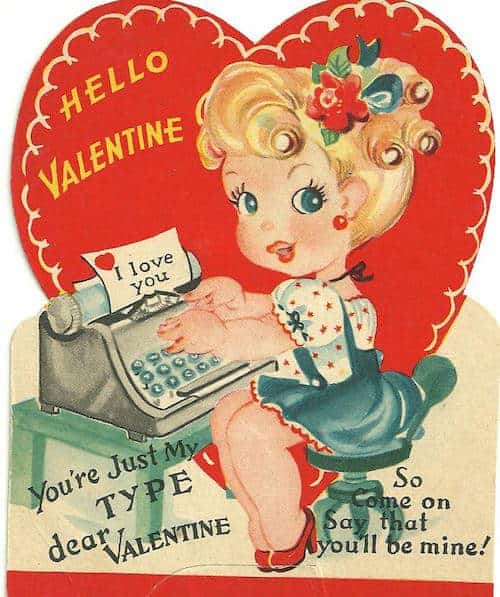Every February 14, millions of Americans slip into a trance of ritual passion. Under its influence, we shell out serious money for extravagant and expensive perishables. Hot house roses—at $75 a dozen—will be snapped up like glue guns at an Etsy open houe. Enough chocolate bonbons to put us all into insulin overload will fly out the confectionary doors. We will put on tight clothes and really uncomfortable shoes to consume $200 dinners. Is it an extra-terrestrial virus? No, it’s Valentine’s Day, the collective heart attack that infects the very fabric of society with what optimists see as harmless indulgence.
Realists identify this spending frenzy as a clear case of social guilt, with a libidinal twist. The flowers, candy, greeting cards with icky-sweet platitudes—we use these mercantile mea culpas to atone for our butt-brained insensitivity, our inability to express our feelings. It’s payback time, with Mrs. See’s macadamia brittle as currency. Roses aren’t merely fragrant foreplay, they’re often surrogates. Instead of making a direct plea for nookie, we “say it with flowers.†Here’s the one day a year that adolescent boys (and many grownup ones) believe they’ll get lucky if they can only find the right card.

How did we get so locked into this insanity? Actually, the whole multi-billion dollar hoopla began with two ill-fated Romans—both named Valentine—who were simply in the wrong place at the wrong time, got executed and became Christian martyrs. The odyssey leading from two guys named Valentine to a modern kingdom called Hallmark has more twists than a French tickler. The two Valentines lived in 3rd century Rome as out-of-the-closet Christians. Sharing not only a name, but the same death date as well—February 14—their cult was grafted onto the very popular Lupercalia festivities held every February 15. During the pagan celebration, scantily-clad young men called Luperci would run around town, sacrificing goats, and playfully whipping women with goatskin thongs. Romans thought this behavior would increase fertility, and I have no doubt that it did.
 A millennium later, having absorbed Lupercalia in the great tradition of Catholic imperialism, St. Valentine’s Day was given new sex appeal by none other than that gabby Anglo scribe, Geoffrey Chaucer, who created the very first Hallmark moment when he called Valentine’s Day a romantic “time when every fowl comes to chose his mate.†Lusty after all that Black Plague, and heady with literacy, European chivalric types began penning love poetry, which soon led to the first officially documented Valentine message, sent in 1415 by Charles, Duke of Orleans, to his wife, while he was detained in the Tower of London.
A millennium later, having absorbed Lupercalia in the great tradition of Catholic imperialism, St. Valentine’s Day was given new sex appeal by none other than that gabby Anglo scribe, Geoffrey Chaucer, who created the very first Hallmark moment when he called Valentine’s Day a romantic “time when every fowl comes to chose his mate.†Lusty after all that Black Plague, and heady with literacy, European chivalric types began penning love poetry, which soon led to the first officially documented Valentine message, sent in 1415 by Charles, Duke of Orleans, to his wife, while he was detained in the Tower of London.
Over the 16th and 17th centuries, European country folk engaged in all manner of quaint courtship rites involving herbs, rocks and secret messages on Valentine’s Day, a festival that gave them permission to express naughty intentions. And with the emergence of reliable postal services in the mid-1800s, V-Day was re-invented as an orgy of sentimental consumerism. Americans, as well as the English and the French, went mad for the new craze of sending sweet nothings through the mail. Books filled with sample Valentine’s love letters became bestsellers, and pretty soon the confectioners and florists got into the act, urging lovers to commit ever more costly acts of amorous disclosure. And they did.
 In 1923 the National Confectioners’ Association took up the slogan, “Make Candy Your Valentine†echoing the avalanche of promotional hoopla that had turned Valentine’s Day into a mercantile cash cow during the Civil War era. It was a traveling salesman from Kansas City, however, who took the business of Valentine’s Day over the top when he founded his greeting card business in 1910. A workaholic with a gift for verbal reductionism, Joyce C. Hall firmly believed that modern Americans had little time to take pen in hand and compose original holiday sentiments. So he did it for them. Today the Hallmark empire he founded rakes in $6 billion each year.
In 1923 the National Confectioners’ Association took up the slogan, “Make Candy Your Valentine†echoing the avalanche of promotional hoopla that had turned Valentine’s Day into a mercantile cash cow during the Civil War era. It was a traveling salesman from Kansas City, however, who took the business of Valentine’s Day over the top when he founded his greeting card business in 1910. A workaholic with a gift for verbal reductionism, Joyce C. Hall firmly believed that modern Americans had little time to take pen in hand and compose original holiday sentiments. So he did it for them. Today the Hallmark empire he founded rakes in $6 billion each year.
 How many of those special cards or bouquets of roses lead to true romance? How many chocolate truffles yield a roll in the hay? Who knows, but we’re all hopelessly hooked. How hooked? Over one billion Valentine’s cards will be sent next week. Candy sales will exceed $900 million and over 100 million roses will be purchased as preludes to romance, or at least the safest sex surrogate that money can buy.
How many of those special cards or bouquets of roses lead to true romance? How many chocolate truffles yield a roll in the hay? Who knows, but we’re all hopelessly hooked. How hooked? Over one billion Valentine’s cards will be sent next week. Candy sales will exceed $900 million and over 100 million roses will be purchased as preludes to romance, or at least the safest sex surrogate that money can buy.



Fantastic!!!! Delightfully mature and funny!!!